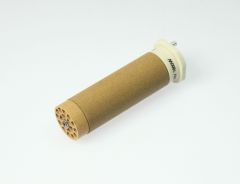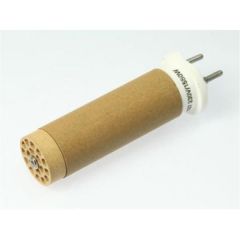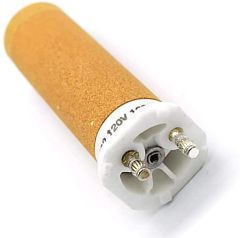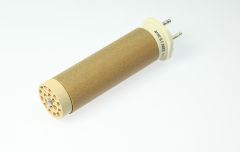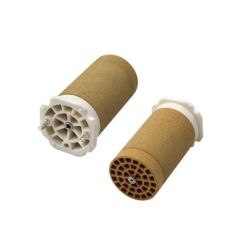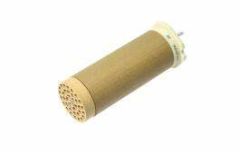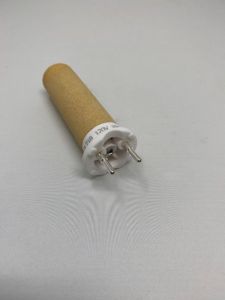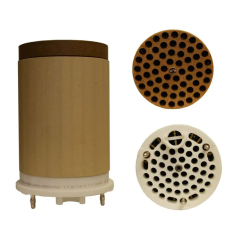Heating Elements

Need heating elements for your work with heat? No need to worry if your hot air tool’s heating element is malfunctioning. Our quality products and heating element prices are some of the best on the market.
Don't see what you need on our website? No problem! Contact us today (800)-694-1472 or email us, info@hotairtools.com, and we'll ensure you get exactly what you need from our wide range of heater elements not currently listed online. Trust Hot Air Tools, a company with decades of experience, to keep you powered up!
Heating Elements: Need a Replacement?
Whether you are using a hot air tool or another type of heating solution, there is one aspect necessary for them to function: a heating element. Heating elements are found in various tools, used across numerous industries, and support countless projects.
Heater elements undergo severe high temperature demands where they can reach 600°C (1112°F) and beyond, leading to a restricted lifespan, so from time to time, they need replacing. This is where we come in!
What Is a Heating Element?
Electric-based tools and devices require a heating element to generate heat. A heating element is typically made up of a conductive material, such as nickel-chromium or iron-chromium-aluminium alloys, that can resist the flow of electricity and convert the electrical energy into heat energy. It’s often encased in a protective sheath made of materials such as stainless steel, ceramic, or glass to prevent damage from external factors.
The level of heat transfer is influenced by the materials used and the shape of the heating element, which can take various forms, including a tubular heating element, such as a coil, strip of wire, or even a ribbon.
Although you may have landed on this page seeking information about hot air gun heating elements, it's worth noting that these elements are used in a wide range of products and devices, such as space heaters, hairdryers, toasters, and underfloor heating systems.
How Does a Heating Element Work?
Electric heating elements resist the flow of electricity, which causes it to heat up as electricity passes through it, resulting in a bright glow in some cases. However, the heating element alone cannot serve any purpose, as the heat needs to be transferred to the device in use.
Luckily, the heating element's design supports outward heat distribution, but the dispersion method could vary depending on the device it's integrated with. For instance, you can set the temperature, which increases the electricity flow to a hot air gun heating element. The resulting heat is then released through the nozzle for various applications, such as melting plastic or stripping paint.
How to Identify Your Heating Element?
When identifying a hot air gun heating element or heating element in any device, there are a few clues to look out for. Firstly, check for any labels or diagrams that indicate the presence of a heating element. Next, try to locate the area of the device or appliance that requires heat - heating elements are often found here.
Once you've narrowed down the area, search for any visible signs of a heating element, such as a coil or metal wire. And finally, if you're still uncertain, use a multimeter to test the suspected heating element’s resistance.
And if all else fails, consult your user’s manual or reach out to us!
Identifying the exact heating element to replace is not a mere matter of recognizing its appearance. But what makes it so important?
When it comes to replacing it, there are three fundamental details that you ought to pay heed to: type, volts, and watts. Fortunately, you can easily locate these pieces of information near the base of the heater element. Keep an eye out for them; they'll be right next to the logo.
How Hot Can a Heating Element Get?
Heating elements are highly resistant. However, the degree of heat they can generate heavily relies on the type of material that's been utilized.
For high temperatures, a metallic resistor alloy – think a Ni-Cr(Fe) and Fe-Cr-AL – is often the material found in the heating element. With this, it’s possible to hit temperatures of 600°C (1112°F) and higher.
However, few applications need their heating element tool to get that hot. If you don't need to reach temperatures that high, other materials, including copper, nickel, aluminium, are used in the heater element.
How to Test Your Heating Elements
To ensure your hot air gun heating element is functioning well, it's important to test and check it regularly. It’s easy and takes only four simple steps:
- Begin by locating the heater tube, unscrewing it, and then removing the mica tube.
- Remove the heating element from the hot air tool.
- Inspect the element to check if any damage exists.
- Use an ohmmeter to measure the heating element’s resistance. If the ohmmeter shows the resistance in double digits, replacement is needed.
Note: Heating elements in a 120V tool should have a resistance reading of 9, while their 230V counterparts clock in at 34 resistance.
If a replacement is necessary, browse our online store to find what you need, or get in touch with one of our specialists.
Heat elements are essential to many heating appliances, and the risks of malfunctioning units can be detrimental. At Hot Air Tools, we provide quality replacement parts, so you won't have to go far to get them. With our fast delivery times, reliable customer service, and affordable prices, you can trust that we're here to help you with preventive maintenance and repair solutions!


